#europasaurus
Note
Where could one buy the English version of the Europasaurus book? I am very interested in reading about this dwarf sauropod.
totally not asking for another wish
I'm glad you ask!
The Europasaurus graphic novel is bilingual, available in German/English. So no matter what copy you get you should be able to read it ;)
When conceptualizing this book we were aware that it would be a very niche subject, but we still wanted to reach a international audience. Since we didn't know if we would be able to print two editions we decided to go for this approach from the very start.
It can also help people to learn a new language, my biggest problem with learning English was that I lacked the motivation and didn't have any interesting literature at hand to motivate me.

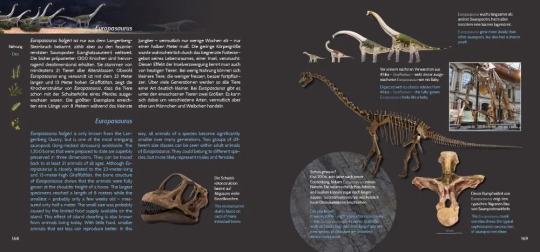

#paleoart#sciart#dinosaurs#jurassic#sauropod#europasaurus#europasaurus graphic novel#bilingual#palaeoblr
203 notes
·
View notes
Text
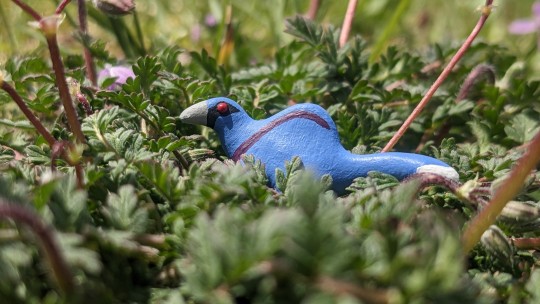

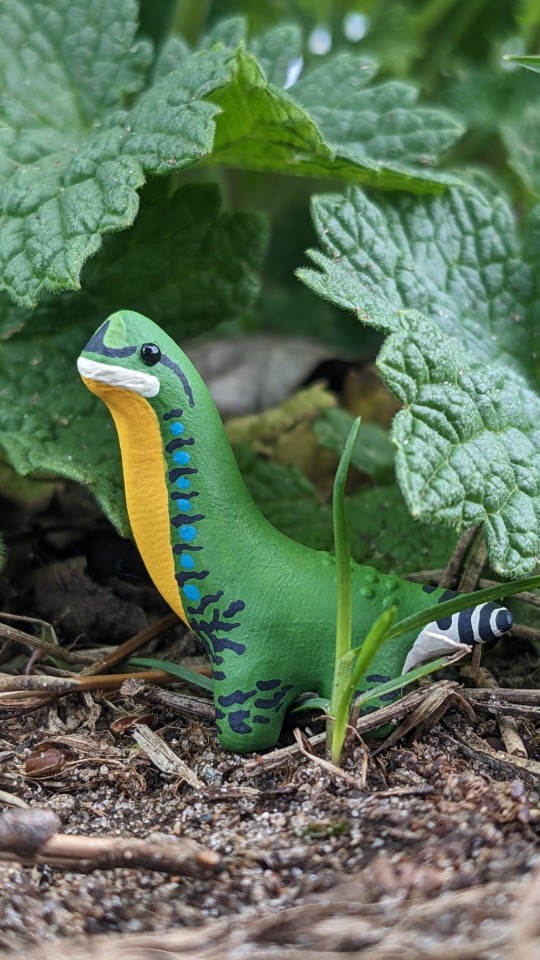





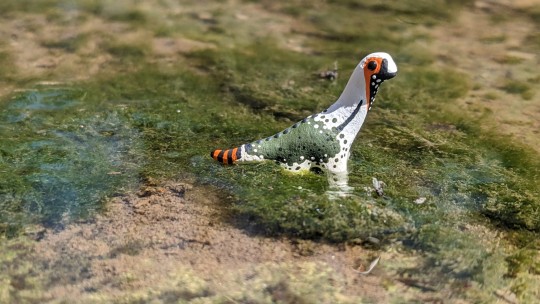
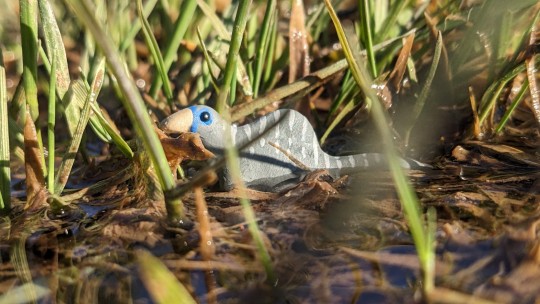
Behold photography!!!
#paleoart#paleoartist#paleontology#tinysaurs#my art#prehistoric#dinosuar#art#etsystarseller#etsyshop#etsyartist#europasaurus#mammoth#sinosauropteryx#elasmosaurus#koolasuchus#deinocheirus#brachiosaurus#ophthalmosaurus#photography
163 notes
·
View notes
Text

My 20th entry for Jurassic July 2023: A pair of Europasaurus holgeri, dwarf relatives of the contemporary giant sauropods Brachiosaurus and Giraffatitan, browse on the leaves of a coastal forest 154 million years ago on an island in what is now the Lower Saxony Basin of northern Germany, while an Anurognathid pterosaur darts past the herbivores in pursuit of a giant cicada.
#dinosaur#paleoart#dinosaurs#europasaurus#jurassicperiod#jurassic_period#mesozoic#jurassic july#paleontology#paleontography#sauropod#sauropods#sauropoda
99 notes
·
View notes
Text


Europasaurus holgeri, a macronarian sauropod from the Late Jurassic of Germany, most famous for its unusually small size (just over 6 m long for mature specimens) attributed to insular dwarfism.
(Repost of some older 2022 art from my general-purpose blog, with additional renders and a proper bibliography)
References:
Marpmann, J. S., Carballido, J. L., Sander, P. M., & Knötschke, N. (2015). Cranial anatomy of the Late Jurassic dwarf sauropod Europasaurus holgeri (Dinosauria, Camarasauromorpha): Ontogenetic changes and size dimorphism. Journal of Systematic Palaeontology, 13(3), 221–263. https://doi.org/10.1080/14772019.2013.875074
Martin Sander, P., Mateus, O., Laven, T., & Knötschke, N. (2006). Bone histology indicates insular dwarfism in a new Late Jurassic sauropod dinosaur. Nature, 441(7094), Article 7094. https://doi.org/10.1038/nature04633
#europasaurus#macronaria#sauropod#dinosaur#reptile#vertebrate#jurassic#mesozoic#paleontology#palaeoblr#paleoart#my art
35 notes
·
View notes
Note
What was the smallest sauropod?
Could they fit in my hand or were they the size of a volkswagon?
Were they cute?
Europasaurus & Magyarosaurus are about the same size, 6 meters long and up to 1,000 kg
35 notes
·
View notes
Text


time for more spream
#my art#dinosaur#paleo#paleoart#paleo art#paleostream#Gerrothorax#vagaceratops#lyviathan#europasaurus#yuanchuavis#nyctosaurus#sigilmassasaurus#thylacoleo
16 notes
·
View notes
Text
December 20th
Box #20 in our count down is Attenborosaurus…
(more…)

View On WordPress
#advent#anchiornis#anurognathus#Asteracanthus#Attenborosaurus#Castorocauda#Christmas#coroniceras#countdown#Dakosaurus#dinosaur#Dysalotosaurus#europasaurus#Gnathosaurus#Guanlong#heterodontosaurus#illustration#Ischyodus#Lobolytoceras#Mamenchisaurus#Ostafrikasaurus#Rhomaleosaurus#Scelidosaurus#Volaticotherium#Yinlong
8 notes
·
View notes
Photo

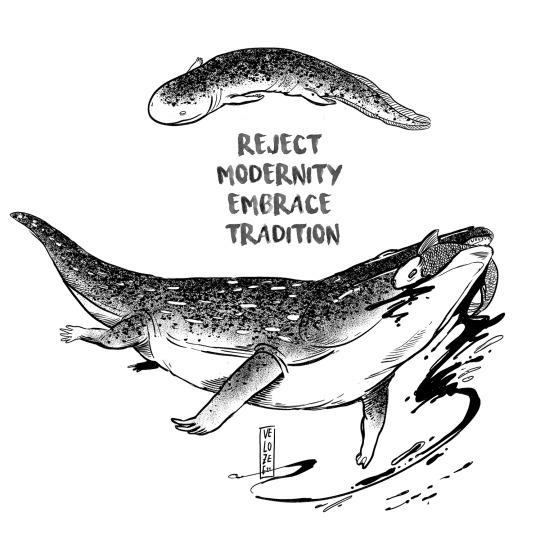



Mixed drawings from my museum trips in 2021
#paleoart#fossils#digital illustration#europasaurus#Diplocynodon#eryops#giant salamander#Spinophorosaurus#deinonychus
21 notes
·
View notes
Text
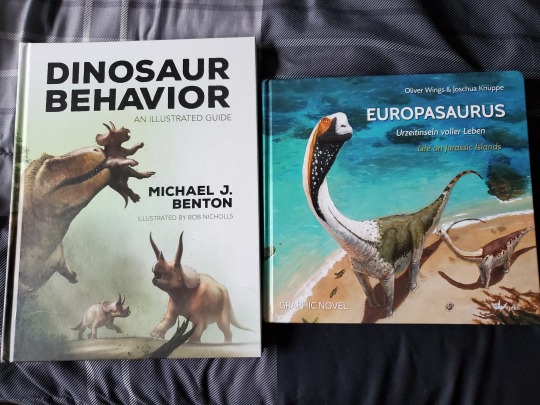
Two great paleontology books illustrated by @bobnichollsart and @knuppitalism-with-ue respectively!
25 notes
·
View notes
Text
important question: which dinosaurs would your faves be and why?
#in my mind seb is a sauropod#but a small one#probably a europasaurus or magyarosaurus but since europasaura were found in germany I'll go with that one#can u tell im bored rn
3 notes
·
View notes
Text

[Paleontology-themed comics and graphic novels, their potential for scientific outreach, and the bilingual graphic novel EUROPASAURUS – Life on Jurassic Islands]
Wings et al. (2023)
If you got a kick out of the fact that it's possible to get published in a scientific journal by writing a paper about comics, there is a way to support this type of work! One of the graphic novels featured in this paper, PALEOCENE by Mike Keesey, is holding a fundraiser to get its 4th issue printed. It's more than 85% of the way to reaching its goal, but it only has 2 days left to get there or else it receives none of the money pledged so far!
PALEOCENE tells the story of early primates trying to live their lives in the wake of the mass extinction that wiped out the non-avian dinosaurs. If you haven't read previous issues, you can get a taste of it from the sample page figured by Wings et al. (from issue #1)!

If every single one of our followers donates just $1 at this point, the goal will be surpassed many times over! If you cannot donate for any reason or have already done so, please share this news far and wide so this project stands the best chance of getting funded.
Donate to the PALEOCENE crowdfund here!
402 notes
·
View notes
Text


An SVP abstract teases the presence of reddish or yellowish pigments in Diplodocus hinting at a wider color palate in sauropods than what we usually depict them with. This reminded me that we went quite experimental with our Europasaurus design back then and it doesn't seem that unlikely now anymore.

409 notes
·
View notes
Text
Updated the shop today!!
New species!
https://www.etsy.com/shop/PrimalCreationsArt
Giganotosaurus
Patterns:
Ashen, Jade-Crested, Argentine Giant, and Dominion




Europasaurus
Patterns
Okapi and Pebbled (One was also based on Joschua Knüppe's book too)



Daeodon
Patterns
Scrublands, Collared, Red River

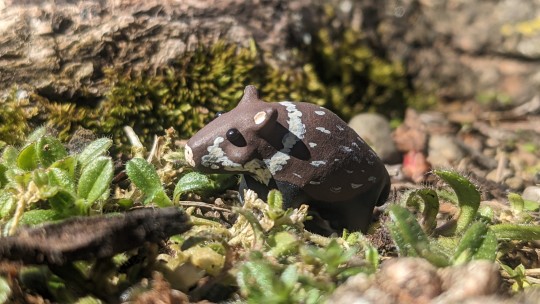

#jurassic park#paleoart#paleoartist#paleontology#tinysaurs#my art#prehistoric#dinosuar#art#etsystarseller#etsyshop#etsy#giganotosaurus#daeodon#Europasaurus
122 notes
·
View notes
Photo

I woke up last night thinking about Batrachotomus and that gave me the idea for this (and there's even more funky guys here, you should all be familiar with Europasaurus and Co.)
#paleo#paleontology#coproliteposting#shitpost#anurognathus#plateosaurus#perry the platypus#batrachotomus#propaleotherium#temnodontosaurus#prehistoric#germany
551 notes
·
View notes
Text
Bigger, Scarier, More Teeth
Paleontology is, by its very nature, a very speculative science. For most of its history, we've only had fragmentary remains of ancient animals that sometimes have no easy modern day counterpart to compare with. Of course, the field is also good at self correcting these errors, which means our image of dinosaurs and other prehistoric creatures is constantly evolving. While admittedly we may never know with 100% accuracy what these animals were like, we can certainly narrow down and tweak our perception to come up with the closest possible image.
Then...there's instances where dinosaurs were deliberately modified. Not a case of misidentification mind you. Cases where the animal was physically altered in order to seem more impressive or threatening.

Case in point: the Giganotosaurus from Jurassic World Dominion. One of the most recent examples, the Giga was depicted with a row of spines running along its crocodilian esque back. Naturally, we have no evidence of these in actual specimens and was probably added to make the final big carnivore of the series look more threatening.
Admittedly I'm not gonna harp on too hard about this since there is a difference between a fictional portrayal and something that's supposed to be accurate and the Jurassic Park series isn't really known for its accuracy. This is honestly just a bench mark for what we're working with and a notable and recent example.
What's a bit more headscratching when said altering happens in more scientific portrayals of dinosaurs.
Take shrinkwrapping for example. For decades, shrinkwrapping was the standard fair in portraying dinosaurs. What it involved was basically showing visible bone structures underneath the skin of the animal.
The results were...

...basically skeletons with skin stretched over them.
The idea, as pointed out by Mark P. Witton in the link above, is not just to portray them as fast, agile, bird like animals, but also matching a popular but inaccurate depiction:
Secondly, images of prehistoric animals as heroically-built, powerful beings are preferred by many merchandisers and palaeoart fans, these interpretations most closely matching the erroneous but popular portrayal of prehistory as a savage struggle for survival, where only the most powerful animals survived.
Thing was, these depictions completely ignored the muscle and tissue underneath the skin which gives the animals more bulk in favor of portraying them as more intimidating. Which in retrospect didn't work since if a dinosaur looked shrink-wrapped in real life, it probably was starving, ill, or basically on the verge of death.
In contrast, there are some artists that go the complete opposite direction. As is the case with David Peters and his...unique look at pterosaurs.
David Peters, a once respected independent researcher and artist, once claimed that he was able to identify hidden features and anatomical structures in pterosaur remains that no-one else had been able to identify. These include elongated fleshy crests, spines, and extravagant feathers.

The results speak for themselves. It's almost astonishing that anybody would think that any animal could even fly with that amount of extra weight and protrusions.
Now while we can poke fun at paleoart all day, the thing is that altered dinosaurs or other prehistoric animals aren't just restricted to art alone. There have been cases where specimens themselves have been altered to look more impressive.
Such is the case with Irritator challengeri, a spinosaurid first discovered in Brazil, South America in 1996. While the original specimen is noted for having one of the most complete skulls of any spinosaurid anywhere, its name is referring to a much more...interesting background.
Irritator wasn't actually discovered by scientists. It was purchased from a fossil dealer which made its way to Germany’s Stuttgart State Museum of the Natural Sciences. In this case, material from the back of the skull had been removed, and placed on the tip of the snout, making the skull appear longer. Presumably this was to make the specimen more marketable. Paleontologist David Martill and his team had to painstakingly remove the altered bit of the snout and restore them to their original location. It was such a pain, they eventually named the species Irritator due to the difficulty of removing and reattaching the material without damaging the specimen.
But even the case of Irritator is nowhere near the levels of altering than the case of Archaeoraptor. AKA: the dinosaur that was completely made up.
Like with Irritator, the Archaeoraptor specimen was an altered fossil (also known as a chimera) sold on the fossil market. Though instead of a single specimen, it was several individuals put together to create a complete product that would sell for a much higher price. Smuggled out of China and sold in the US for $80,000 USD during 1999, it ended up in the hands of amateur dinosaur enthusiast Stephen Czerkas who wanted it to be the centerpiece of his museum in Blanding, Utah. Working with noted paleontologist Phil Currie and Chris Sloane of the National Geographic magazine, they determined that the specimen was the long sought-after missing link between dinosaurs and birds. A groundbreaking discovery like this would've revolutionized the field. So much so the magazine did a story on it and christened it Archaeoraptor even before a more formal study could be conducted.
The result: a complete disaster and embarrassment to both paleontology and National Geographic when it was revealed to be a hoax. Creationists had a field day, practically tearing the reveal apart and used it as evidence against paleontologists and their work. The zeal for the missing link resulted in an absolute blunder for science.
Ironically though, it's now believed that the two species used in the specimen belong to Yanornis (an early bird) and the famous Microraptor, both of which are stronger contenders for the title of "missing-link".
Here's a link to an excellent video by Dino Diego that goes into detail if you're interested: The Bizarre Archaeoraptor Hoax - YouTube
Needless to say, the field of paleontology is full of fabrications and falsehoods. And more often than not it's difficult to truly pick out what's real and what isn't. Which is a problem since it draws into question the validity of both research done by paleontologists, the work of paleoartists, and the very specimens themselves. Naturally it should come to no surprise that researchers need to be diligent in how dinosaurs and other prehistoric animals are portrayed and studied. Especially when sensation overcomes the truth many work so hard to find.
#dinosaur#dinosaurs#paleontology#paleoart#paleomedia#long post#giganotosaurus#shrinkwrapping#david peters#pterosaurs#irritator#archaeoraptor#fossil market#fossils#fossil chimera#feel free to check out the sources for more details
150 notes
·
View notes
Text
good luck I have no idea who will win
#sauropods#dinosaurs#paleontology#palaeoblr#poll#prehistoric life#brachiosaurus#apatosaurus#mamenchisaurus
118 notes
·
View notes